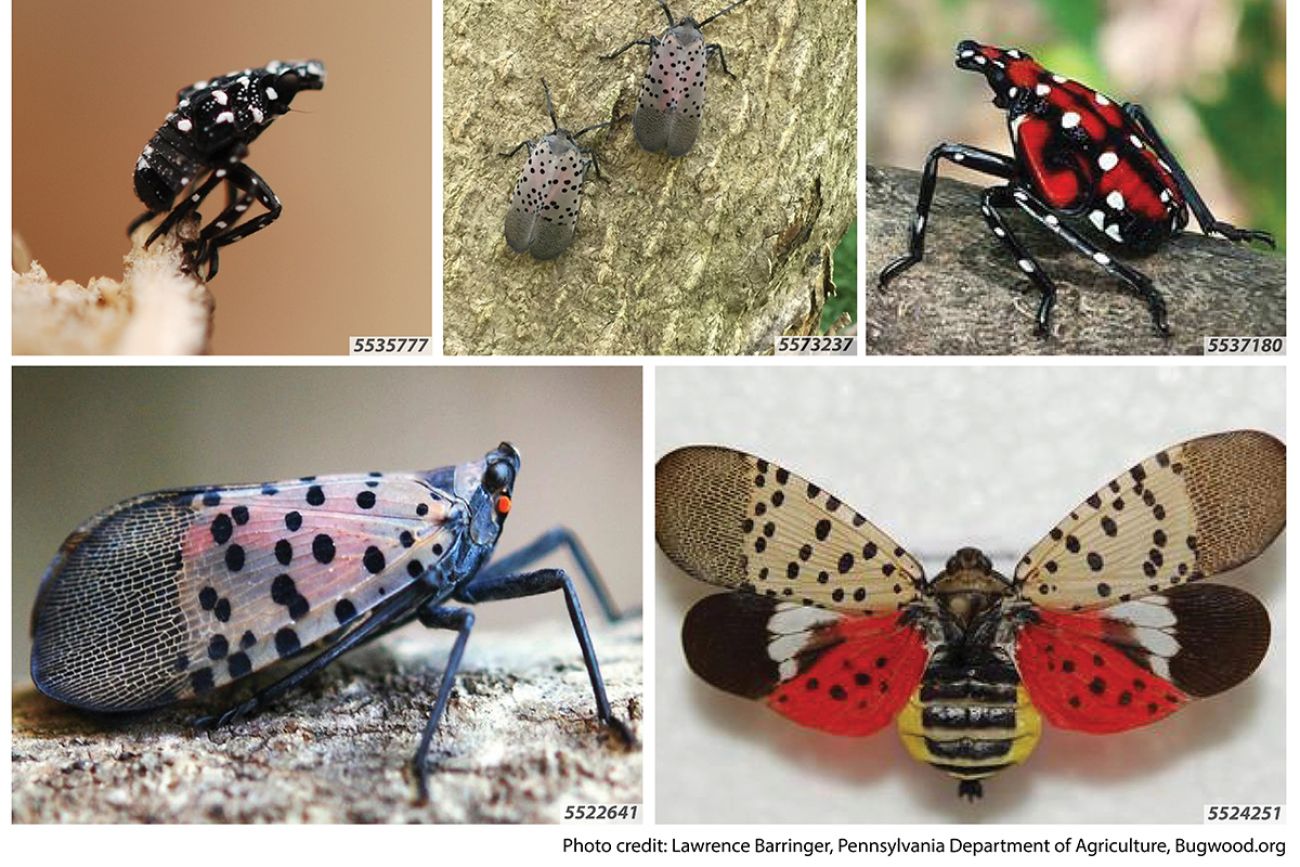Invasive spotted lanternfly arrives in Michigan: bad news for wine lovers

- The winged insects pose a threat to grapes and other agricultural crops
- First discovered in Pennsylvania in 2014, they’ve spread to 12 states
- Regulators are scrambling to map the extent of the infestation
Michigan has joined a growing list of states infected with an invasive fly that has already damaged crops on the east coast and parts of the Midwest and now threatens the state’s wine growers and fruit farmers.
The spotted lanternfly, native to eastern Asia, has been detected near a wastewater treatment plant and some plant nurseries in Pontiac, Michigan regulators announced Thursday.
The lanternfly “likely hitchhiked on nursery stock brought in from an infested state and has possibly been here for several months,” said Mike Philip, pesticide and plant pest management division director of the state’s agriculture department.
Related:
- More Canada geese — and their poop — make Michigan home. Blame the heat.
- Michigan anglers fear fishing deal with tribes could hurt their interests
- Michigan weighs criteria for wolf hunts if they're delisted as endangered
Regulators fear the brightly-colored crop-damaging insect could quickly overtake Michigan.
“Typical pest management has really just not proven effective to eliminate it in other states,” said Jennifer Holton spokesperson for the Michigan Department of Agriculture and Rural Development.
With eradication unlikely, Holton said, “we’re shooting for containment.”
Lanternfly prefer to feed on another invasive species, the tree of heaven, but they aren’t picky. They damage crops like grapes, almonds and fruit trees by feeding on sap and leaving behind a sticky “honeydew,” that can fuel mold growth to harm or kill plants.
That’s frightening news in Michigan, with its popular Up North wine industry. Statewide, Michigan produces about 11,000 acres of juice grapes and 3,300 acres of wine grapes.
“It’s critical for everyone to be on the lookout for spotted lanternfly and report potential sightings to the state,” Michigan Farm Bureau industry relations specialist Theresa Sisung said in a statement to Bridge Michigan.
First detected in Pennsylvania eight years ago, the spotted lanternfly has also spread to Connecticut, Delaware, Indiana, Maryland, Massachusetts, New York, North Carolina, Ohio, Pennsylvania, Virginia and West Virginia..
Prolific hitchhikers, they spread when people move firewood, cars and other objects. Species managers are urging Michiganders to check their vehicles for eggs or insects before driving, keep doors closed when parked and remove invasive trees of heaven.
Those who spot lanternfly or their nymphs or eggs should take photos and notify officials through the Eyes on the Field program, and destroy the pests.
State regulators also will begin inspecting twigs and branches over a wide area to determine just how far lanternfly have already spread, Holton said.
Michigan Environment Watch
Michigan Environment Watch examines how public policy, industry, and other factors interact with the state’s trove of natural resources.
- See full coverage
- Subscribe
- Share tips and questions with Bridge environment reporter Kelly House
Michigan Environment Watch is made possible by generous financial support from:
Our generous Environment Watch underwriters encourage Bridge Michigan readers to also support civic journalism by becoming Bridge members. Please consider joining today.
See what new members are saying about why they donated to Bridge Michigan:
- “In order for this information to be accurate and unbiased it must be underwritten by its readers, not by special interests.” - Larry S.
- “Not many other media sources report on the topics Bridge does.” - Susan B.
- “Your journalism is outstanding and rare these days.” - Mark S.
If you want to ensure the future of nonpartisan, nonprofit Michigan journalism, please become a member today. You, too, will be asked why you donated and maybe we'll feature your quote next time!






